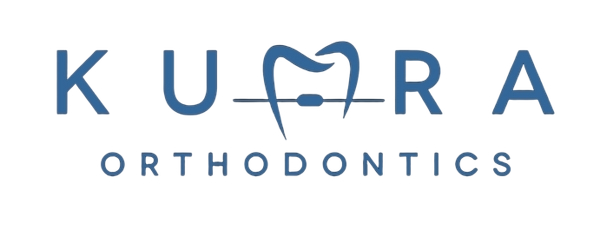An underbite is a dental condition that occurs when the lower teeth protrude forward, creating the impression that the jaw is protruding outward from the mouth. Underbites can range in severity from mild to severe, but regardless of how severe they are, correcting them will require dental treatment because underbites rarely correct themselves on their own. It is essential to get treatment since complications might include problems with mouth breathing and speech, and tooth decay.
An underbite is more than a cosmetic issue that can negatively impact your self-esteem. If it is not treated, it can cause health concerns such as chronic headaches, difficulty speaking and eating, pain in the jaw, and tooth decay due to excessive wear of the tooth enamel.
What is an Underbite?
An underbite is a malocclusion of the jaw in which the lower teeth protrude beyond the upper teeth. Underbites, also known as a Class III malocclusion or a reverse-bite, affects just five to ten percent of the population. This contrasts protrusive bites, more commonly known as overbites, a colloquial term. They might be so minor that they are hardly evident or can be so severe that the lower jaw spreads out well beyond the upper jaw. The severity of these conditions varies widely.
Even though it is possible to live a healthy life with a slight underbite, more severe occurrences might lead to more significant issues. Some of the symptoms are problems with speech, biting, chewing, pain, discomfort in the mouth and jaw, and excessive tooth wear. Some forms of underbite can cause damage to the enamel of the teeth and increase the probability that the front teeth will chip or break.
Needing an orthodontic appointment?
Visit Kumra Orthodontics Washington, DC or Kumra Orthodontics Stafford, VA, and request an appointment with us!
Underbite Treatment Options
The effectiveness of orthodontic treatment to correct an underbite is very high, and in many instances, underbites can be treated without the need for surgical intervention.
Treatment options are dependent on the patient’s age as well as the degree of their underbite; however, in the majority of cases, underbites that are mild to moderate can be repaired without the need for surgery. The following are some of the most popular methods used to correct an underbite:
An Upper Jaw Expander
This may be advised as a treatment option if the upper jaw is also narrow in breadth. The upper jaw expander is a device secured across the patient’s palate and gradually widens the jaw to improve the patient’s bite by making the lower teeth better align with the top teeth.
The ‘Reverse-pull’ Headgear
Patients less than 10 years old benefit the most from treatment with this kind of headgear, which can be used to bring the upper jaw forward and function more successfully.
Braces
The treatment of underbites with traditional braces has been practiced for decades. They are effective when used in conjunction with headgear and elastics in realigning the jaw. The disadvantage is that when the patient is wearing them, they are very noticeable and not the most aesthetically pleasing option. For traditional braces to be effective, they typically need to be worn for between 18 and 36 months.
Clear Aligners or Invisalign
Invisalign, a removable teeth aligner, is one of the treatment options that should be considered for an underbite, particularly in adults. This alignment therapy yields results that are comparable to those produced by regular braces. Additionally, it can be used with other characteristics, such as elastics, to assist in the correction of overlapping teeth.
The patient wears a series of transparent aligner trays specifically designed for them to move their teeth into the ideal alignment during the treatment. A 3D scan of the patient’s teeth is required to fabricate the customized aligner trays. The duration of this treatment is around twelve months.
Tooth Extraction
In mild to severe cases of underbite, it may be possible to remedy the problem by pulling a few of the affected teeth from the mouth.
Surgery
When performed on people with a severe underbite, orthognathic jaw surgery can realign the upper and lower jaws, so they are in their optimal locations. The operation has a very high level of predictability and is regarded as having a low risk of complications. Your specialized orthodontist will, if necessary, provide you with a referral to a maxillofacial surgeon for further treatment.
The early diagnosis of an underbite by a knowledgeable orthodontist specialist is essential to the successful and appropriate treatment of underbites.
Underbites can usually be properly corrected by oral surgeons who have received certification in the field. Reshaping the jaw to either extend the upper jaw or shorten the lower jaw is one of the most common types of surgery performed to repair an underbite. In certain instances, the correct contour of the jawbone can be preserved with the application of wires, plates, or screws. Surgery exposes patients to a number of dangers, such as those connected to the use of general anesthesia, the possibility of contracting an infection or bleeding complications, and the formation of scars.
Underbite Surgery
Surgical correction may be necessary for severe cases of an underbite. If you have an excessive number of teeth, having some of them extracted may help alleviate the condition. If, on the other hand, your underbite is the result of the form and alignment of your jaw, surgical correction may be your best option.
Orthognathic Jaw Surgery
In orthognathic jaw surgery, your rear jaw is separated from your front jaw, your front jaw is altered for a better fit, and your rear jaw is moved into a better position. It could be done as an outpatient procedure or require a brief hospital stay. Even while full recovery can take up to a year, you should be able to resume your typical activities within a few weeks after receiving treatment.
Le Fort III Osteotomy
To successfully complete this operation, you will need a surgeon that specializes in oral and maxillofacial reconstruction. To rectify the alignment, they bring the individual’s entire face forward. Healing should take the standard amount of time with a Le Fort III Osteotomy.
Remember that correcting an underbite during childhood is far simpler than doing so later in life; hence, many pediatric dentists screen their young patients for the condition in the hopes of identifying it at an earlier stage. Underbites, on the other hand, are typically diagnosed and treated in later years.
Underbite vs. Overbite
While a person with an underbite has lower teeth that protrude in front of the upper teeth, someone with an overbite has the opposite problem. When someone has an overbite, their upper teeth extend well beyond the line of their bottom teeth. Although it can have origins similar to underbites, this condition typically does not require the treatment you may need for an underbite.
Read More: Differences of Overjets Vs. Overbites and How to Treat Them
Frequently Asked Questions
Do children outgrow underbites?
Underbites are a condition that unfortunately cannot be outgrown by children. Because underbites are typically a genetic trait, it is quite improbable that an underbite will correct itself once a child’s permanent teeth erupt.
An underbite may become more noticeable during adolescence, particularly during the rapid growth known as the growth spurt. In that instance, the underbite may grow more pronounced, the lower jaw and chin may appear to be projecting forward more, and the profile may become more concave. Because of this, we strongly encourage getting therapy as soon as possible, as there are some instances in which it is possible to intervene successfully.
What age should you check and fix an underbite?
The sooner, the better, in this case. When possible, orthodontic treatment to address an underbite should begin in childhood, when the jaw bones are still flexible and can be more easily coaxed into alignment. However, adulthood is the best time to begin correcting an underbite in some circumstances. A skilled orthodontist can provide the right information and the finest guidance to handle an underbite condition if they make an early diagnosis on the patient.
Consult with Kumra Orthodontics to learn more about how to fix an underbite
If you are concerned that you or your child may have an underbite, please consult with Kumra Orthodontics. We can help diagnose the severity of the underbite and recommend the appropriate treatment. Treatment for an underbite is important to prevent mouth breathing, speech problems, and tooth decay.



